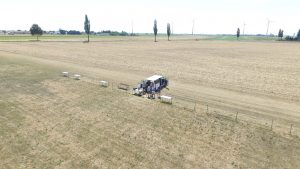
The mobility program of the European Union, named after Erasmus of Rotterdam who studied in different places all over Europe, turns 30 this year. I wanted to take this opportunity to promote this great possibility for gathering international experience and getting insights into the teaching and research skills of our European colleagues.
The ERASMUS program, named ERASMUS+ since 2014, is most famous for providing scholarships for students, and that is what this backronym originally stands for: European region action scheme for the mobility of university students (ERASMUS). But over the years, the program has been growing, since 1997 also funding the mobility of University staff between institutions. Since then, roughly half a million staff exchanges were funded. Every European University that takes part in the ERASMUS program has bilateral agreements for the mutual exchange of students and staff. And the big advantage of the ERASMUS staff exchange program is that it is very easy to organize: Find out which institution your university has an agreement with, contact a colleague there, sign a mobility agreement and plan your trip. The financial support is really well calculated: Depending on which country you are visiting you will receive a dayly lump sum of 100-160 Euro for living expenses and of course travel costs depending on distance (e.g. 500-2000km = 275 Euro).
Our department at Bonn University for example has 34 partner institutions all over Europe, and with ERASMUS+ there is also the possibility to expand these collaborations to non-EU countries worldwide. This year, we received Tomas Galia from the University of Ostrava (Czech Republic) here in Bonn to share his research findings on woody debris in mountain channels in the Carpathian Mountains and I went to the University of Vienna (Austria) to give a field course on UAV applications in geomorphology together with Sabine Kraushaar. So, take advantage of this opportunity and get to know other departments and offer joint courses with your colleagues and maybe also advance other projects during that shared time.
Check out the possibilities at: https://ec.europa.eu/programmes/erasmus-plus/opportunities/staff-teaching_en

